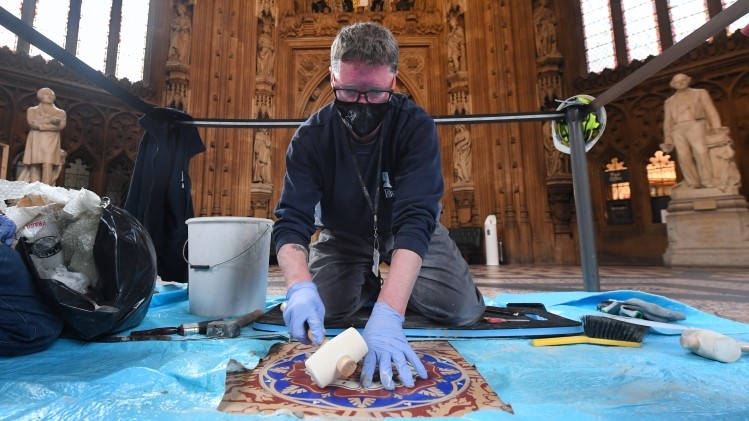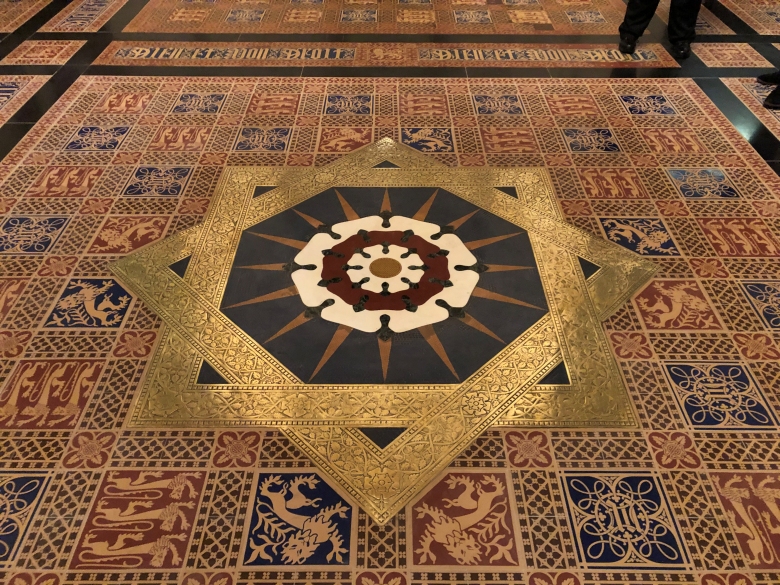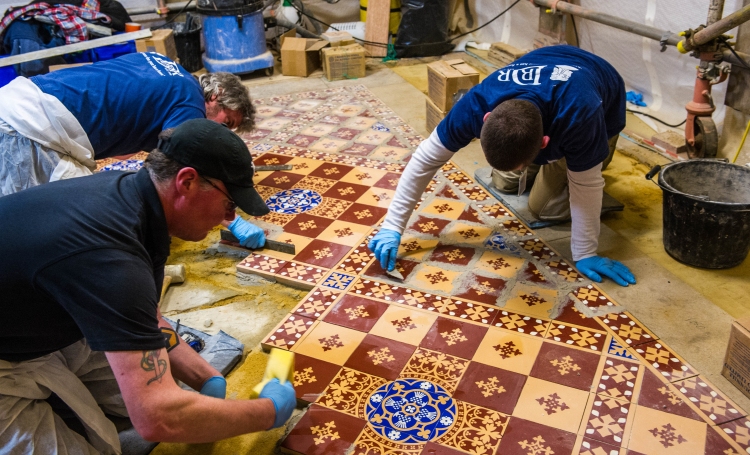
Conservation specialist DBR has restored the Palace of Westminster’s 19th century flooring to its original splendour.
DBR has been working on restoring the “encaustic” tiles, first added to the building by Gothic revivalist Augustus Welby Northmore Pugin in the 19th century, since 2013.
In 2010, DBR worked on a whole panel replacement trial in a section of St Stephen’s Hall using a mixture of salvaged and new tiles provided by Craven Dunnill Jackfield.
That led to its stonemasons being commissioned to continue the encaustic conservation project throughout the Palace from 2013 until the end of May this year, when restoration work was finally completed.
Introduced at the beginning of the 13th century from France, encaustic tiles became popular in abbeys and royal palaces.

As principle architect on the current Palace, Charles Barry had suggested the floors of several halls, galleries and corridors within the building be composed of the material, embellished with heraldic symbols.
Heavy footfall and WWII bomb damage caused major wear and tear to the flooring over the centuries, leading to the loss of colour and grip.
Meanwhile Thomas Minton & Sons, the ceramics company and official producer of the encaustic tiles, ceased its production in the 1960s. This meant any tiles manufactured for repairs after this date came from various sources, which couldn’t match the originals.
When DBR was commissioned by Strategic Estates to undertake the project, it discovered just how extensive the replacement of tiles had been over the decades.
In the late 1970s and early 1980s, as well as trial areas laid in 1998 and 2004, the inconsistency in artwork quality, and reproduction of the original designs, disrupted the continuity of pattern across the floor, DBR said.
Further, replacement tiles used in the latter half of the 20th century were around half the thickness of the Minton originals, it added. The original 25mm tiles were laid in soft mortar and could accommodate movement without cracking, whereas the 20th century ones, at 13mm thick, were designed to be laid on a hard mortar bedding as a floor finish and, as such, were less robust.

Previous temporary repairs had also been carried out using coloured epoxy resins, which was visually unappealing. As a result, some of the tiles had suffered so much damage their inner core began to show.
Adrian Attwood, executive director of DBR, said: “As it receives nearly a million visitors per year, the Palace of Westminster required high-quality restoration work which would involve replicating the exact original design of the tiles and ensuring they would remain intact for as long as possible.
“We also had to make sure we could conduct these repairs over the years with minimal disruption to Parliament’s numerous employees and visitors. To do this, we set up a controlled environment, consisting of tents and vacuum air filters, which were designed to protect everyone and everything within the space, including the works of art.”
Once the tiles were recorded to an agreed methodology, which included a combination of physical and photogrammetric surveys, DBR’s stone masons had to work with 1.5 millimetre joints, manage dust and moisture control, carry out repairs to the sub floors to deal with cracks and maintain the fine tolerances in the floor layout.
DBR has now successfully salvaged the floors of St Stephen’s Hall, Central Lobby, Peers’ Lobby, the Royal Gallery and the Lower Waiting Hall, as well as numerous corridors.
Attwood said: “Despite multiple fires and even war, this iconic landmark has stood strong over the centuries. The marvellous encaustic tiles found throughout the Palace can be considered as much a work of art as the glazing, murals and statuary, and we are honoured to have worked with Strategic Estates to help restore one of the site’s most beautiful and historically significant architectural features for future generations to appreciate and enjoy.”
Comments
Comments are closed.











Proud to say that within Great Britain we have many talented craftsman that shine when put to task such as the Palace of Westminster. And the Quality that transpires is robust and will last for many years. It is true to say ‘What you pay for you get’
These specialist trades leave no stone unturned; and results are no less than stunning. I only hope that our younger generation continue with these vast trades instead of viewing the mobile phone all the time. Kudos to Adrian Attwood and team.